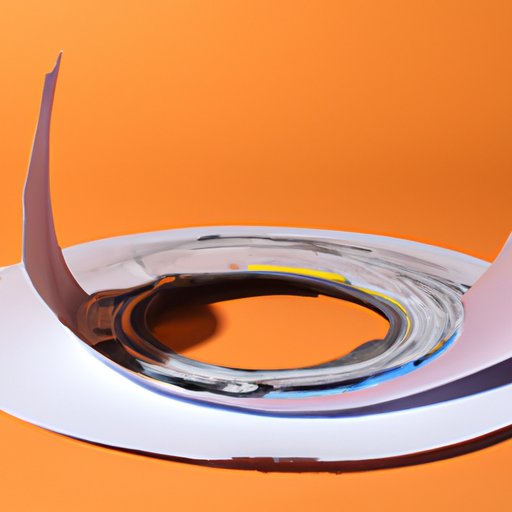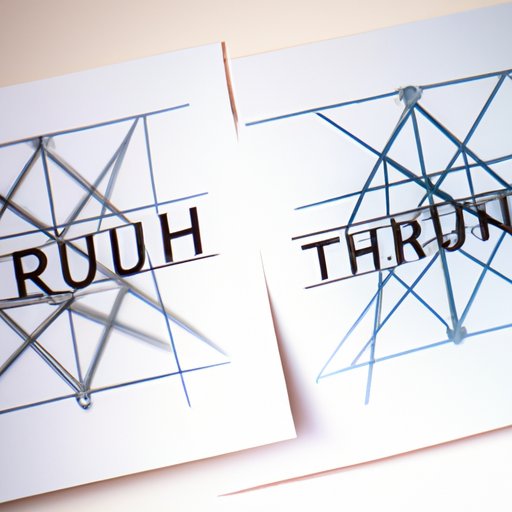Introduction
Contrast is the difference between two or more elements and is an essential visual and cognitive component in various fields such as art, design, and even our daily lives. Contrast plays a crucial role in creating interest, emphasis, and depth in visual and written materials. This article aims to provide a comprehensive understanding of contrast, its types, and how it’s used in visual design and other mediums, writing, and our daily lives.
What is Contrast?
Contrast is the measure of difference between two or more elements—for example, color, shape, texture, or value. Contrast is the property of visual perception that differentiates an object from other objects or the background. It is an essential concept in art, design, and visual communication, and contrasts can make a design or writing more effective and engaging.
Types of Contrast
There are different types of contrast, such as color, value, texture, and shape. Each of these types leads to differences between the visual or written elements.
Color contrast
The contrast between two or more colors is the first thing that comes to mind when talking about contrast. We see color contrasts used in traffic signage, art, design, and other visual media. We can create color contrast by using complementary colors, monochromatic color schemes, or analogous colors that sit near each other on the color wheel.
Value contrast
Value contrast deals with the difference between lightness and darkness. A grayscale image is an excellent example of value contrast. When an image has a wide range of light and dark areas, it has high value contrast. Light and shadow are often used in art and design to create depth and dimension.
Texture contrast
Texture contrasts deal with the surface qualities of an image. Different textures can create a contrast between rough and smooth, soft, and hard surfaces. Using contrasting textures can add interest to a design and break up monotony.
Shape contrast
Shape contrast deals with the differences in form between visual elements. Geometric shapes such as squares, triangles, and circles often provide striking contrasts when juxtaposed in a visual design.
The Role of Contrast in Visual Design
Contrast is an essential component of visual design and is used in graphic design, web design, and other visual mediums. Contrast helps to create a visual hierarchy, emphasize key elements, and add interest to a design.
For example, a graphic designer may use color contrast to make text or an image stand out. Using complementary or contrasting colors can create emphasis and highlight a particular element. Contrast can also be used to group related elements together, making it easier for a viewer to understand the information presented.
Web design relies heavily on contrast to create visual hierarchy and direct the user’s attention. Using color contrast or differing text sizes can guide a user through the content and highlight important information.
Using Contrast to Make Your Content More Engaging
Contrast can also be used in writing and other content creation to make it more engaging. Writers can use contrast to create tension, humor, or juxtapose ideas, among other functions.
For instance, using contrasting sentences with differing lengths can add interest to written content. Contrasting ideas or descriptions can enhance character development in literary works. Creating tension in a story also involves the effective use of contrast.
The Science of Contrast: Why Our Brains Need It
Contrast plays a crucial role in cognitive perception and has a significant impact on how our brains process information. According to research, humans are predisposed to notice contrasts due to the structure of the brain and the attention these contrasts require.
Contrast also aids in cognitive accessibility, improving memory retention, and attention. For instance, when reading, darker text on a light background is easier to read than light text on a dark background.
Using Contrast to Create Impactful Presentations
Contrast can also be used to make your presentations more effective. For example, using contrasting colors or fonts can help text or images stand out and create emphasis. If you want to create an impactful presentation, use contrast to create an abundance of interest.
Contrasting Styles: How to Mix and Match Different Design Elements
Contrast can be used to create interesting and unique design styles when different elements are mixed and matched. Instead of sticking to one particular style, mixing and matching elements such as color, shape, and texture can create a unique design style.
For instance, using a bold color with a softer hue can create an element of contrast and add interest to an overall design. Or, using organic shapes, such as rounded edges when surrounded by angular elements, creates contrast and can be visually appealing.

Contrast in Everyday Life: How we Use it without even Realizing
We use contrast in our daily lives, whether we realize it or not. We tend to contrast our outfits with different hues, textures, and patterns to create an exciting outfit. We also use contrast in our homes, mixing up different patterns in interior designs to create complementary styles. In advertising, references to contrasting products are used to entice people to try something new.
Conclusion
Contrast is a crucial component of visual and cognitive perception, and it plays a significant role in our daily lives. Understanding contrast and the different types that exist can help beginner content creators make their work more engaging and innovative. Contrasting elements can create a visual hierarchy, depth, and emphasize key elements, making a design easier to understand and memorable. Creativity and practical application of contrasting elements make a significant difference in visual and written content alike.
